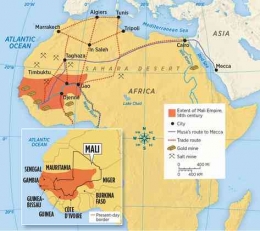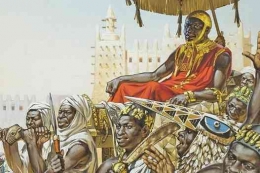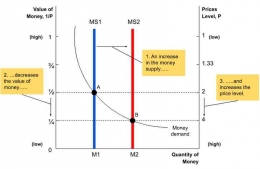In other words, the assumption that Mansa Musa was distributing gold into the modern economy on a large scale offered the potential for then-Egyptian (Cairo) traders to increase 4-5 times the prices of normal goods. At that time, it caused the price of normal goods to rise. Because it supports an increase in the amount of money circulating for society, the increase in prices that we now think of as inflation, results in a decrease in the value of money.
To support this theory, Friedman (1956) explained that purely monetary inflation in this case was caused by excessive growth in the money supply which could not be matched by real growth in goods and services. At the same time, other factors, such as supply and demand in this case are other factors, and so have little effect compared to pure money. This is also reinforced by the results of Dede Hijriani's research (2016) which shows that there is a direct relationship and a positive correlation between the money supply and increased inflation. Where this states that the money supply and inflation have a very strong correlation in the long run. As can be seen from the literature example of this case, Mansa Musa's act of giving large amounts of gold, one of which was to Egypt (Cairo) , affected the Egyptian (Cairo) fall in the value of gold in the economy for 12 years (Harris & Charlie,2020).
2) Quantity theory of money
From the study case, it can be inferred there is a relationship between money and the price level of goods. The theory that explains such relationship is the quantity theory of money--also popularized by Milton Friedman and Irving Fisher. The theory states that the change in price level of goods is proportional to the change in money supply. This causal relationship is examined by Alimi (2012) using the Granger-causality test and found a unidirectional causal relationship from money supply to inflation. This means the causality comes from a change in money supply which affects inflation and not the other way round. To visualize this theory, Irving Fisher developed the quantity equation:

If the velocity of money in an economy (V) and the volume of transactions for goods and services (T) remain constant, and the amount of money (M) doubles, price levels will likewise double.
4. Lessons Learned
The stories of Mansa Musa's journey to Mecca, during which he bestowed money on the nations he passed through, mention Egypt. The action caused a loss of $1.5 billion in current currency. The Quantity Theory of Money and Monetary Inflation Theory are both relevant in this scenario. These two hypotheses have something in common in terms of how the amount of money in circulation will impact the increase in prices in the eyes of the public at present time. This is intended so that producers of products and services can communicate price increases as a result of an increase in the money supply. According to Milton Friedman, this will eventually produce a contemporary economic phenomenon, namely Inflation. This is shown by the effect of Mansa Musa which caused Egypt to experience an economic shock for 12 years.
The main lesson from this case study that applies to contemporary economies is that expanding the money supply is not always linked to successful long-term outcomes.This is demonstrated by the behavior of Mansa Musa, who gave away gold in large quantities with the best of intentions but inadvertently depreciated the value of the currency over time, thus driving up the overall price. Modern thinking holds that the problem can be solved by a tight monetary policy. One strategy is to increase interest rates to encourage individuals to reduce unnecessary consumption, which reduces the money supply. A decrease in the money supply correlates to general price improvements.
Bibliography
Galeza, T, & Chan, J. (2018). An inside look at paper money around the world. IMF. Accessed from https://www.imf.org/en/Publications/fandd/issues/2018/06/value-of-paper-money-around-the-world-currency










